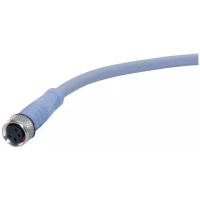IDEC SmartRelay functions
IDEC SmartRelay Manual 227
Functional Description
The analog math function combines the four operands and
three operators to form an equation. The operator can be
any one of the four standard operators: +, -, *, or /. For each
operator, you must set a unique priority of High (H),
Medium(M), or Low(L). The high operation will be performed
first, followed by the medium operation, and then by the low
operation. You must have exactly one operation of each
priority. The operand values can reference another
previously-defined function to provide the value. The analog
math function rounds the result to the nearest integer value.
The number of operand values is fixed at four and the
nu
mber
of operators is fixed at 3. If you need to use fewer
operands, use constructions such as + 0 or * 1 to fill the
remaining parameters.
You can also configure the behavior of the function when the
Ena
ble p
arameter En=0. The function block can either retain
its last value, or be set to 0. If the parameter Qen0 = 0,
then
the fu
nction sets AQ to 0 when En=0. If the parameter
Qen0 = 1, then the function leaves AQ at its last value
when
En=0
.
Possible errors: Zero division and o
verflow
If the analog math function block execution results in zero
division o
r overflow, it sets internal bits that indicate the type
of error that occurred. You can program an analog math
error detection function block in your circuit program to
detect these errors, and to control the program behavior as
needed. You program one analog math error detection
function block to reference one specific analog math function
block.

